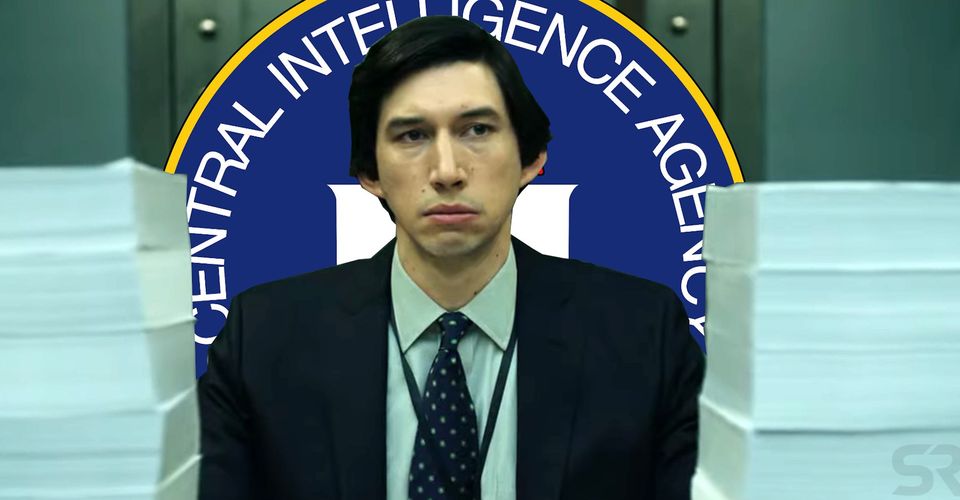The Report True Story: What Amazon’s CIA Torture Movie Leaves Out

Scott Z. Burns’ The Report tells the true story of investigator Daniel J. Jones’ obsessive tracking of the CIA-sanctioned program that led to the torturing of over 100 “potential” terrorists – but how much did the Amazon original movie leave out? The Steven Soderbergh-produced film stars Adam Driver as Jones, who leads a cast that also includes Annette Bening as Senator Dianne Feinstein and Jon Hamm as Denis McDonough, the White House Chief of Staff under the Obama Administration.
Morally duped and frankly embarrassed by the weight of the country’s most disastrous terrorist attack, the Central Intelligence Agency authorized the use of EITs – “enhanced interrogation techniques” – to pry any sort of information out of dozens of detainees. The extent to what “enhanced” meant was truly horrendous: waterboarding, sleep deprivation, freezing conditions, and tight-space confinement, among others. And the result, as detailed in Jones’ 6,700+ word torture report, showed not only that these practices were bred by malicious intent, but that they were incredibly ineffective as well. The film reenacts Jones’ painstaking, five-to-seven-year process of data collection and analysis. Despite the ferocious legal battle that emerged between the CIA and the head of the Senate’s investigation committee, Senator Feinstein, Jones’ report was finally released to the public on December 9, 2014; the senator called the program “a stain on our values and on our history.”
Given that the intrinsic and historic value of this story is beyond quantifiable, The Report does a fair job of presenting the facts. But again, Jones’ final report contained nearly 7,000 pages of incriminating evidence against the Central Intelligence Agency, and frankly, no two-hour movie can tackle such a vast assembly of information. Here’s what Amazon Studios and Scott Z. Burns’ latest film got right and wrong about Daniel Jones’ extensive investigation.
What The Report Gets Right About The CIA Torture Program Investigation

Though the film itself uses non-linear storytelling, the roots of the actual events can be found in Al-Qaeda’s September 11th terrorist attacks. Almost immediately thereafter, psychologists Jim Mitchell (Douglas Hedge) and Bruce Jessen (T. Ryder Smith) approach the CIA with what they consider to be a full-proof plan: a series of brutal interrogation techniques which they guarantee will provide intelligence that would never otherwise see the light of day. With $80 million of taxpayer money, Mitchell and Jessen are sent overseas to oversee the operations of their torture program.
As portrayed in the film, these horrific acts went under the radar for an extensive period of time. It wasn’t until 2007, when The New York Times reported that the CIA had destroyed tapes of the interrogations two years earlier, that the Senate officially launched their investigation. As the elected leader of the report, Jones, a former FBI analyst in the International Terrorism Operations Section, dove into CIA records. He produced his first findings two years later in 2009, before getting the go-ahead to move forward with the investigation. As shown in the movie, Jones was told that it should only take about a year to complete.
During this time, Attorney General Eric Holder had announced that he was broadening his own criminal investigation into the CIA. Like The Report shows, this barred anyone within the agency from speaking to Jones or his team and it was at that point that the Republicans pulled their support. With no outside help, Jones’s team completed the 6,700-page document in 2012.
As detailed in The Report, Jones and Feinstein were then required to send their findings to the CIA for review. Over that summer, with little help from the Obama Administration, the CIA and Senate debated on what information was vital to the report, what was inaccurate, and what needed to be redacted for “various” reasons. Later that year, once the CIA seemed pinned down to a corner, the agency accused the Senate of first illegally accessing and removing its own review of the interrogation program – the “Panetta Review” that was seen in the film and had mysteriously appeared on his computer one day – and then Jones and his team for hacking into the CIA mainframe.
Soon enough, however, Feinstein shot back with her own criminal accusations, rightfully accusing the CIA for violating the agreement between the agency and the Senate for conducting an unauthorized search of her staffer’s computer network. Though John Brennan (Ted Levine), the director of the CIA at the time, claimed that “nothing could be further from the truth,” the CIA’s inspector general found that the agency had actually been guilty of Feinstein’s accusations. And not only that, but the Panetta Review was revealed to have not only come to the same conclusions as Jones’ investigations, but differed heavily from the official response provided by the CIA.
The charges were quickly dropped by the Department of Justice and though the report was then sent to the White House, it came back heavily redacted as well. After Senators Feinstein and John McCain pushed back, the 500-page executive summary of the report was released on December 9, 2014, right before the Democrats lost control of the Senate.
What The Report Gets Wrong

To be fair, for the most part, The Report‘s retelling of this historic investigation is appropriately accurate. The film itself is based on the executive summary – which is over 6,000 pages less than the actual document – so there is certainly a lot of information missing from The Report. But given that it is barred from the public, that isn’t really something to discredit the film over.
However, there are a couple of sequences that took a creative license to the actual events. For instance, Senator Feinstein, who is portrayed as the availing public figure of the investigation, only became the Chairman of the Committee in 2009, roughly around the same time the committee launched a larger investigation and two years after Jones first began digging through the CIA’s files. This also means that the senator was not the person who asked Jones to spearhead the investigation: he was actually hired by West Virginia Senator Jay Rockefeller to find out what had been on those deleted tapes.
Furthermore, the real Jones told Esquire that the scene in which President Obama’s announcement of Osama Bin Laden’s death is coupled by the CIA’s appraisal of the EITs was slightly fabricated. Though it is true that the Obama White House played a lackluster role in the investigation, siding with or deferring to the CIA on pretty much every point, it’s not as if the CIA was trying to propel the president’s career forward.
- The Report (2019)Release date: Nov 15, 2019
About The Author


















